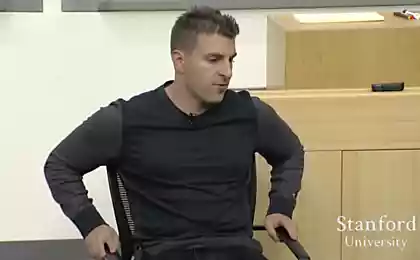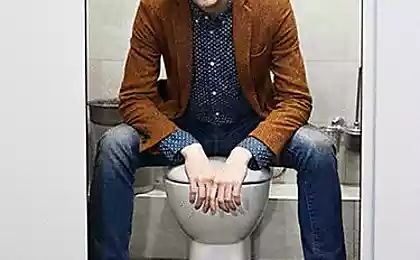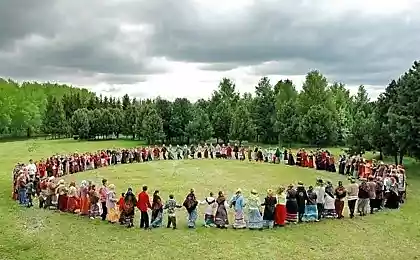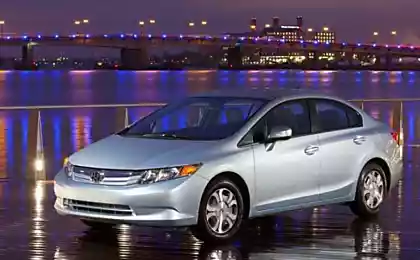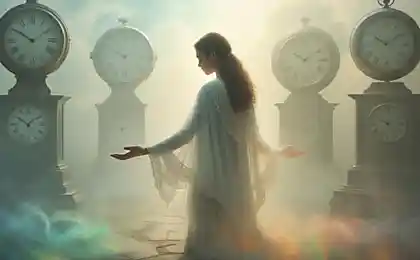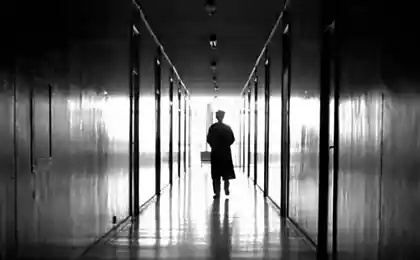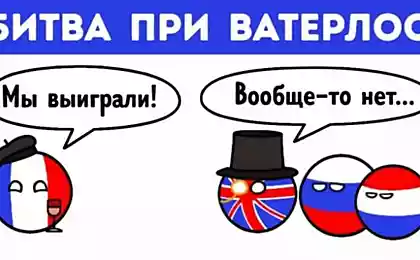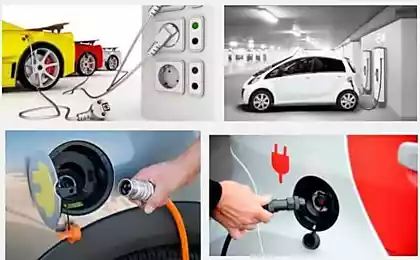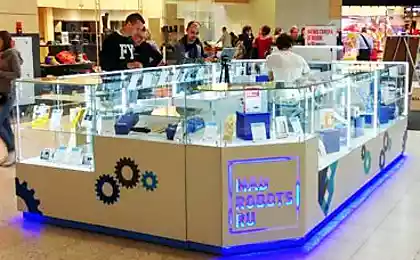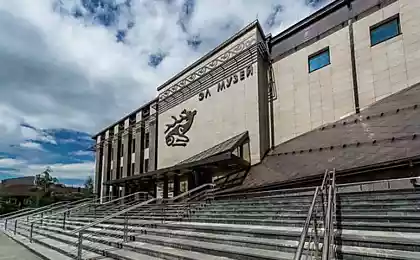561
10 insane beauty standards of the past, that are hard to believe
Thirty one million seven hundred eight thousand eight hundred eighty nine
Along with the time change, and ideas about female beauty. And the famous words "beauty requires sacrifice" once had a literal meaning. On that not only were girls to seem attractive.
The website gathered the 10 evidence that the ideal is relative and highly variable, so is the mind to approach to fashion.
XV–XVII century: COPINE
Ladies XV–XVII centuries wore chopine to protect their dresses from dirt and demonstrate a high social position. Shoes talked to others about the identity and status of his mistress. Height "chop-in" could be up to 50 cm, so needed a servant that would support his lady.
1939: protection makeup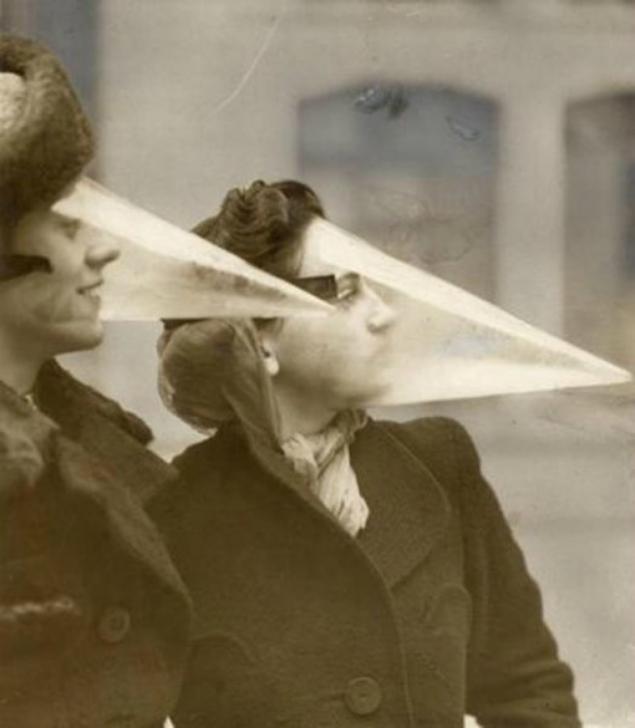
So ladies saved my makeup from rain. One of the drawbacks was that the cone very quickly fog up inside.
XX century: dimples
Feminine was considered incomplete without the charming dimples on cheeks. In 1923, had patented a device that was worn on the person, fixed behind the ears and chin and using 2 rods coming out very strong and painful pressure on the cheeks. Prolonged use of such desirable dimples.
The Renaissance:the high forehead and absence of eyelashes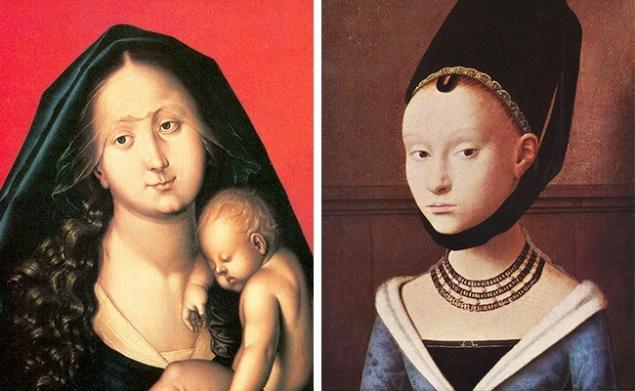
The naturalness of this period is not in Vogue, the active use of cosmetics and the female body is erected in a cult. In fashion a high, rounded forehead, and the hairline had to be as far as possible. Most of the girls shaved the hair over the forehead to create a fashionable image. Also every fashionista felt the need to get rid of the eyelashes, using ordinary tweezers.
England, XVII century: white skin
Actively used tool with lead and vinegar — the skin did become whiter, but over time, in contrast, were yellowed, and reversing the process was impossible. Queen of England Elizabeth I was an ardent fan of such cosmetics. Her face was now so white that went down in history as the"mask of youth".
England, XVII century: vascular pattern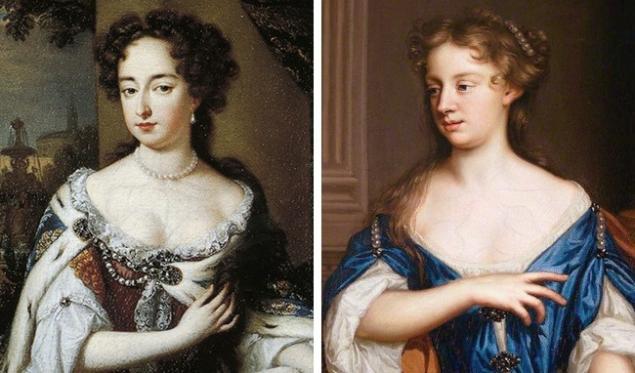
In order to emphasize their high origin, girls blue pencil draw veins on the neck, chest and shoulders.
The Victorian era: biting lips
Queen Victoria banned the use of cosmetics. However, this did not prevent women to find a way out.Instead of blush and lipsticks much had to bite her lips and pinching her cheeks.
The nineteenth century: the arsenic for a beauty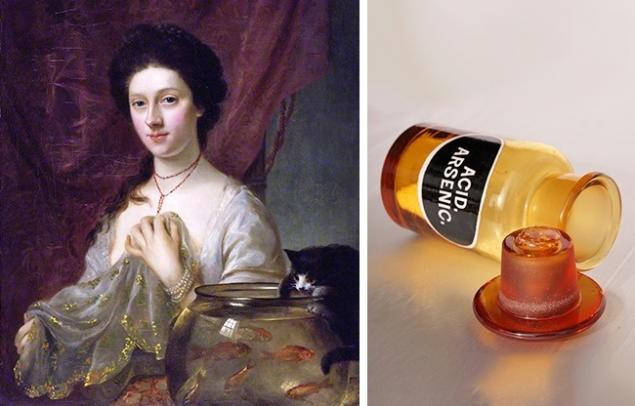
In the XIX century it was fashionable there's arsenic, to "give the face a youthful appearance, eyes a — glitter, and body — attractive roundness". True, there were side effects — arsenic accumulates in the thyroid gland and causes goiter, and sometimes death.
The Victorian era: green dresses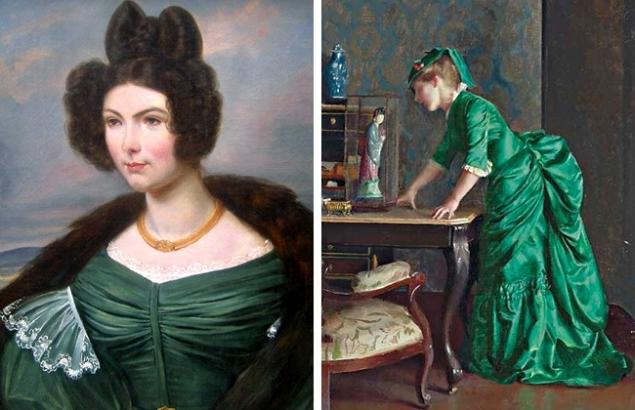
In the Victorian era was invented green dye, which became a hit among fashionistas. The color is called "Scheele's green". To create Scheele used a mixture of arsenic and copper, and the composition slowly killed the owner of the dress. Dye got on the mucous membranes and cause irritation, and gradually penetrated into the skin. In the same color I painted the walls in the house, exposing people to the risk of death.
Europe, XVIII century: flies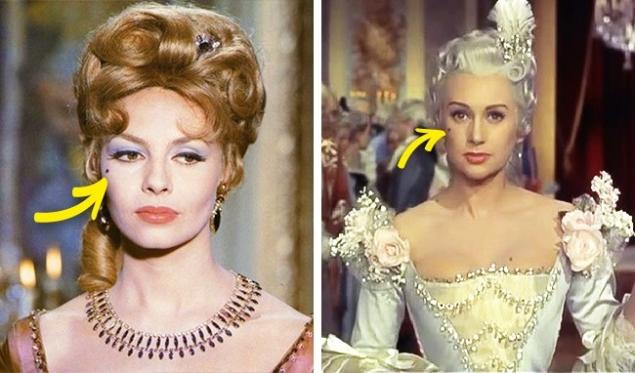
The time when you were generous in their use of makeup and special importance was attached to the flies. The front sight was not only a makeup product but also an instrument of flirting:
See also
The standards of beauty of the XX century
18 the main criteria of female beauty in different countries
via www.adme.ru/svoboda-puteshestviya/18-glavnyh-kriteriev-zhenskoj-krasoty-v-raznyh-stranah-mira-1398315/
Along with the time change, and ideas about female beauty. And the famous words "beauty requires sacrifice" once had a literal meaning. On that not only were girls to seem attractive.
The website gathered the 10 evidence that the ideal is relative and highly variable, so is the mind to approach to fashion.
XV–XVII century: COPINE

Ladies XV–XVII centuries wore chopine to protect their dresses from dirt and demonstrate a high social position. Shoes talked to others about the identity and status of his mistress. Height "chop-in" could be up to 50 cm, so needed a servant that would support his lady.
1939: protection makeup

So ladies saved my makeup from rain. One of the drawbacks was that the cone very quickly fog up inside.
XX century: dimples

Feminine was considered incomplete without the charming dimples on cheeks. In 1923, had patented a device that was worn on the person, fixed behind the ears and chin and using 2 rods coming out very strong and painful pressure on the cheeks. Prolonged use of such desirable dimples.
The Renaissance:the high forehead and absence of eyelashes

The naturalness of this period is not in Vogue, the active use of cosmetics and the female body is erected in a cult. In fashion a high, rounded forehead, and the hairline had to be as far as possible. Most of the girls shaved the hair over the forehead to create a fashionable image. Also every fashionista felt the need to get rid of the eyelashes, using ordinary tweezers.
England, XVII century: white skin

Actively used tool with lead and vinegar — the skin did become whiter, but over time, in contrast, were yellowed, and reversing the process was impossible. Queen of England Elizabeth I was an ardent fan of such cosmetics. Her face was now so white that went down in history as the"mask of youth".
England, XVII century: vascular pattern

In order to emphasize their high origin, girls blue pencil draw veins on the neck, chest and shoulders.
The Victorian era: biting lips

Queen Victoria banned the use of cosmetics. However, this did not prevent women to find a way out.Instead of blush and lipsticks much had to bite her lips and pinching her cheeks.
The nineteenth century: the arsenic for a beauty

In the XIX century it was fashionable there's arsenic, to "give the face a youthful appearance, eyes a — glitter, and body — attractive roundness". True, there were side effects — arsenic accumulates in the thyroid gland and causes goiter, and sometimes death.
The Victorian era: green dresses

In the Victorian era was invented green dye, which became a hit among fashionistas. The color is called "Scheele's green". To create Scheele used a mixture of arsenic and copper, and the composition slowly killed the owner of the dress. Dye got on the mucous membranes and cause irritation, and gradually penetrated into the skin. In the same color I painted the walls in the house, exposing people to the risk of death.
Europe, XVIII century: flies

The time when you were generous in their use of makeup and special importance was attached to the flies. The front sight was not only a makeup product but also an instrument of flirting:
- fly Crescent were invited to date night;
- Amour meant love;
- coach — consent to joint flight;
- fly from the upper lip was evidence that the girl is free and is open to marriage proposals;
- on the right cheek — married;
- on his left cheek flies wore widow.
See also
The standards of beauty of the XX century
18 the main criteria of female beauty in different countries
via www.adme.ru/svoboda-puteshestviya/18-glavnyh-kriteriev-zhenskoj-krasoty-v-raznyh-stranah-mira-1398315/
